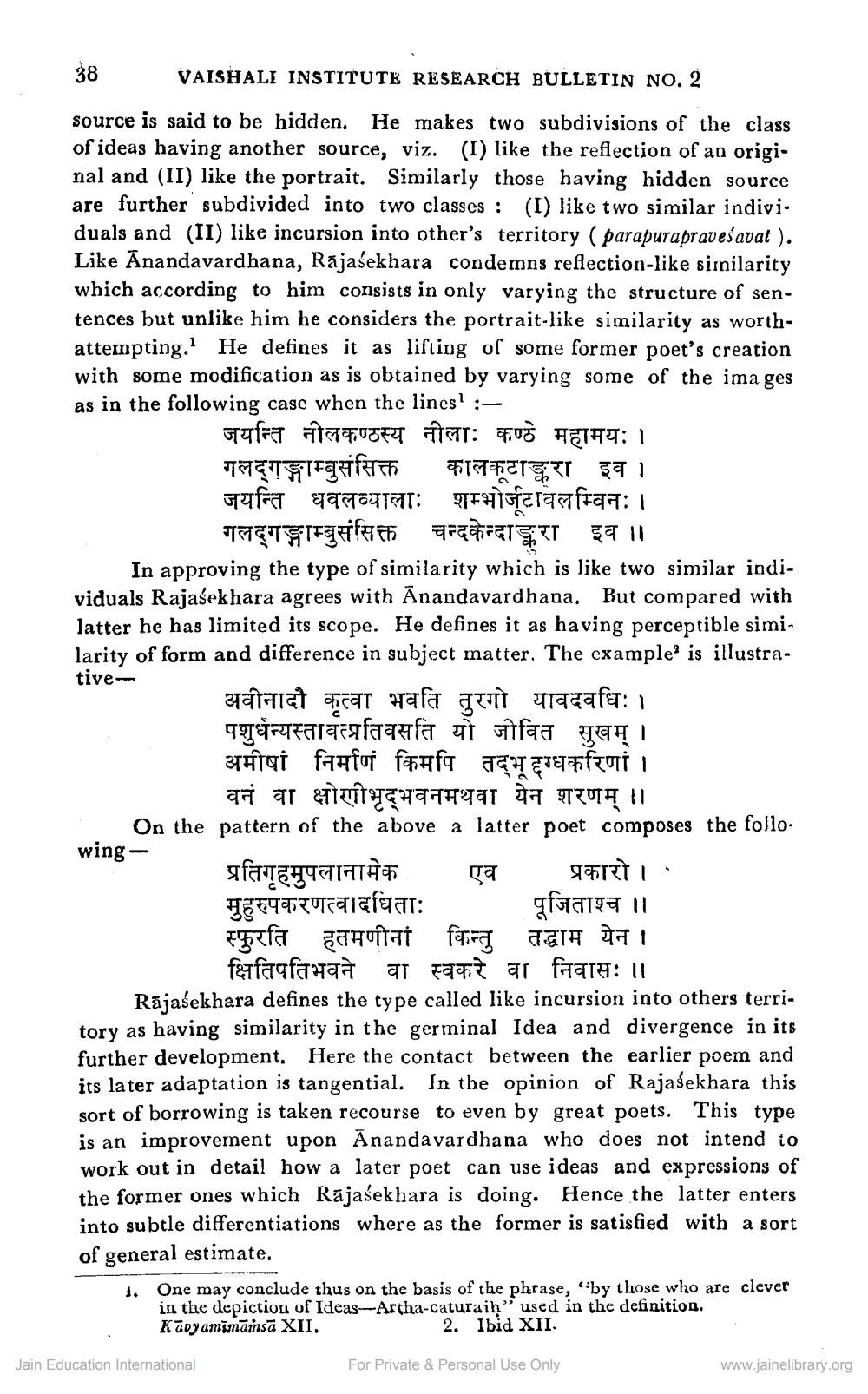________________
VAISHALI INSTITUTE RESEARCH BULLETIN NO. 2
source is said to be hidden. He makes two subdivisions of the class of ideas having another source, viz. (I) like the reflection of an original and (II) like the portrait. Similarly those having hidden source are further subdivided into two classes : (I) like two similar indivi. duals and (II) like incursion into other's territory (parapurapraveśavat ). Like Anandavardhana, Rajasekhara condemns reflection-like similarity which according to him consists in only varying the structure of sentences but unlike him he considers the portrait-like similarity as worthattempting. He defines it as lifting of some former poet's creation with some modification as is obtained by varying some of the images as in the following case when the lines! :
जयन्ति नीलकण्ठस्य नीलाः कण्ठे महामयः । गलद्गङ्गाम्बुसंसिक्त कालकूटाङ्करा इव । जयन्ति धवलव्यालाः शम्भोर्जूटावलम्विनः ।
गलद्गङ्गाम्बुसंसिक्त चन्दकेन्दाङ्करा इव ।। In approving the type of similarity which is like two similar individuals Rajasekhara agrees with Anandavardhana. But compared with latter he has limited its scope. He defines it as having perceptible simin larity of form and difference in subject matter. The example is illustrative
अवीनादौ कृत्वा भवति तुरगो यावदवधिः । पशुधन्यस्तावत्प्रतिवसति यो जीवित सुखम् । अमीषां निर्माणं किमपि तद्भु इग्धकरिणां ।
वनं वा क्षोणीभृद्भवनमथवा येन शरणम् ।। On the pattern of the above a latter poet composes the following
प्रतिगृहमुपलानामेक एव प्रकारो। मुहरुपकरणत्वादधिताः पूजिताश्च ।। स्फूरति हतमणीनां किन्तु तद्धाम येन ।
क्षितिपतिभवने वा स्वकरे वा निवासः ।। Rajasekhara defines the type called like incursion into others territory as having similarity in the germinal Idea and divergence in its further development. Here the contact between the earlier poem and its later adaptation is tangential. In the opinion of Rajasekhara this sort of borrowing is taken recourse to even by great poets. This type is an improvement upon Anandavardhana who does not intend to work out in detail how a later poet can use ideas and expressions of the former ones which Rajasekhara is doing. Hence the latter enters into subtle differentiations where as the former is satisfied with a sort of general estimate. 1. One may conclude thus on the basis of the phrase, "by those who are clever
in the depiction of Ideas-Artha-caturaih" used in the definition. KavyamimansaXII.
onclude thueso - Artha-caturaibid XII.
Jain Education International
For Private & Personal Use Only
www.jainelibrary.org




